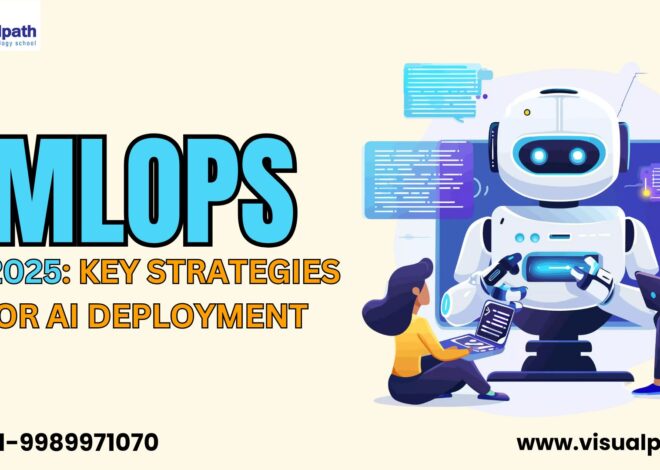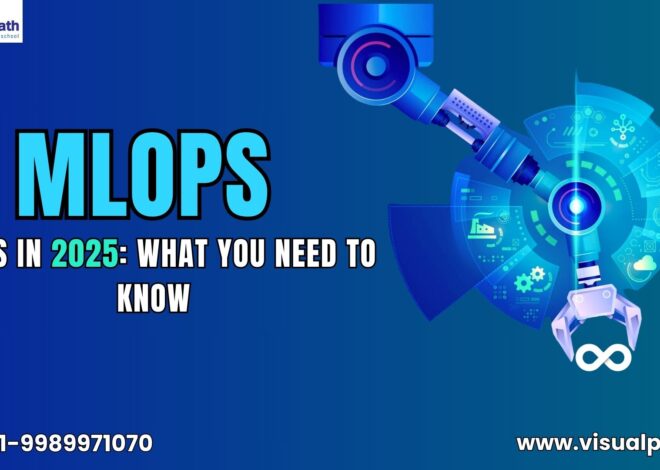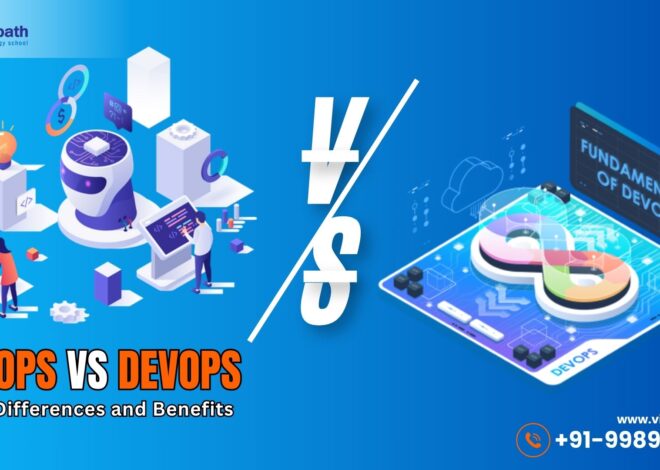Introduction
Machine Learning Operations (MLOps) is rapidly evolving, driven by the increasing adoption of machine learning (ML) across various industries. As organizations strive to deploy and manage ML models at scale, MLOps practices are becoming essential. This document explores the future trends in MLOps, focusing on the key advancements and innovations expected to shape the field in the coming years.
- Trend: Automation and AutoML Integration
1.1 Automated Data Engineering
Automation in data engineering is becoming a critical component of MLOps. As datasets grow larger and more complex, manual data preprocessing and feature engineering can become bottlenecks. Automated data engineering tools are emerging to streamline these processes, enabling quicker and more efficient model development.
1.2 AutoML in MLOps Pipelines
AutoML platforms, which automate the selection, training, and tuning of machine learning models, are being integrated into MLOps pipelines. This integration allows for faster experimentation and deployment of models, reducing the time from ideation to production.
- Trend: Edge Computing and Decentralized Learning
2.1 Edge Computing for Real-Time ML
With the rise of Internet of Things (IoT) devices, there is a growing need for real-time data processing. Edge computing allows for data to be processed closer to its source, reducing latency and bandwidth usage. MLOps practices are adapting to support the deployment and management of ML models on edge devices. MLOps Training in Ameerpet
2.2 Federated Learning and Privacy
Federated learning enables the training of models across decentralized devices without sharing raw data, thus preserving privacy. This trend is becoming increasingly important as organizations seek to leverage sensitive data while complying with privacy regulations.
- Trend: Explainability and Model Transparency
3.1 The Need for Explainable AI
As ML models are used in critical applications, there is a growing demand for transparency in decision-making processes. Explainable AI (XAI) helps stakeholders understand how models arrive at their predictions, ensuring trust and accountability.
3.2 Tools and Techniques for Model Interpretability
Various tools and techniques, such as SHAP and LIME, are being developed to provide insights into model behavior. These tools are becoming integral to MLOps pipelines, helping data scientists and engineers ensure that models are fair, robust, and interpretable.
- Trend: Advanced Monitoring and Model Performance Management
4.1 Beyond Traditional Metrics
Traditional performance metrics like accuracy and loss are no longer sufficient for evaluating ML models. Advanced monitoring solutions are being developed to track a wider range of metrics, including fairness, robustness, and ethical considerations. MLOps Online Training
4.2 Automated Model Retraining and Adaptation
As data distributions change over time, models can become less accurate. Automated retraining pipelines are being implemented to adapt models to new data, ensuring continuous performance and reliability.
- Trend: Security and Compliance in MLOps
5.1 Ensuring Model Security
With ML models increasingly becoming targets for attacks, such as data poisoning or model theft, security is a top priority. MLOps practices are evolving to include robust security measures, such as encryption, access controls, and secure coding practices. MLOps Training in Hyderabad
5.2 Privacy-Preserving Techniques
Techniques like differential privacy are being integrated into MLOps pipelines to ensure that models do not inadvertently expose sensitive information. This is especially important in industries like healthcare and finance, where data privacy is critical.
- Trend: Enhanced Collaboration and Unified Platforms
6.1 Cross-Functional Teamwork
The complexity of deploying and managing ML models requires collaboration across various teams, including data scientists, ML engineers, DevOps professionals, and domain experts. MLOps practices are focusing on enhancing collaboration and communication among these teams.
6.2 Integrated MLOps Platforms
Unified platforms that integrate data management, model development, deployment, and monitoring are becoming more prevalent. These platforms provide a single interface for all stakeholders, simplifying the MLOps process and reducing operational overhead. MLOps Training Online
Conclusion
The future of MLOps is marked by significant advancements in automation, edge computing, explainability, monitoring, security, and collaboration. As organizations continue to adopt and scale machine learning, these trends will shape the development and implementation of robust, reliable, and ethical ML systems. Embracing these trends will be crucial for organizations looking to stay competitive in an increasingly AI-driven world. MLOps Course in Hyderabad
The Best Software Online Training Institute in Ameerpet, Hyderabad. Avail complete Machine Learning Operations Training by simply enrolling in our institute, Hyderabad. You will get the best course at an affordable cost.
Attend Free Demo
Call on – +91-9989971070
WhatsApp: https://www.whatsapp.com/catalog/917032290546/
Visit: https://www.visualpath.in/mlops-online-training-course.html




